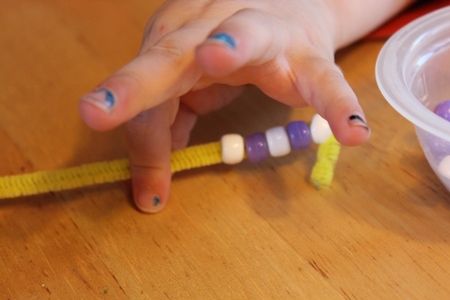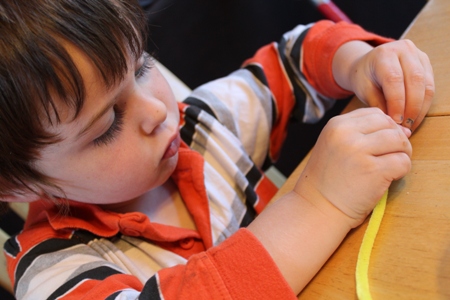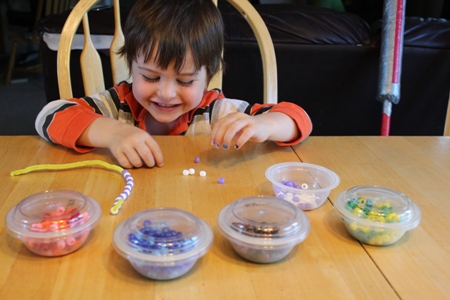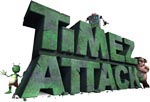November 8, 2010
I’m always looking for easy ways to get kids excited and learning their math tables.
Drilling math facts has got to be one of the more boring and arduous tasks of early math education.  It’s often as hard on the parents as the kids.
We just found something new to add to our math toolbox.¬† In return for an honest review, our family was offered a trial copy of a fun game called Math Rider.¬† My 9-year-old daughter sat down the first time and spent almost an hour jumping her horse, ‚ÄėShadow‚Äô, over addition fact obstacles on the quest to save the princess.¬† She enjoyed the game so much, that the math practice was swallowed along with the ‚Äėspoonful of sugar‚Äô added by the game.¬† (See the end of the post for what the kids said about the game)

Here is what we think:
The Math:
- Drills all 4 sets of math facts from 1 ‚Äď 12, starting with addition and progressing to subtraction, multiplication, and then division.
- The game automatically figures out the speed to present the math and which questions to choose based on how the child is doing.  The faster they are answering, the faster the new questions come.  And they see the ones they have trouble with more often.  We found it to be very well adapted to the skill level of each child.
- With easy, medium, advanced, and mastery levels for each type of math problems, the math facts are introduced in small chunks at a time, making them easier to learn.
The Game:
- All my children can have their own accounts with different log-ins.
- Controls are easy.  You only need to type in the numbers and hit enter for the horse, Shadow, to jump the obstacles.

- The quest is broken up into ‚Äėrides‚Äô that last 30 questions, which is a nice chunk to keep interest without getting bored.¬† Then each ‚Äėride‚Äô is plotted on a section of the map, so the player can see their progress in the quest.

- The story is fun and there are rewards for each completed level that the player gets to keep in their home field.
The Feedback on how the math is going:
- If you miss a problem, your horse Shadow stops, and the problem and the answer appear in big numbers on the screen while a voice recites the math fact.
- After each ride, there is a row of bars for each problem attempted.  Green bars mean you answered the problem faster than previously.  Yellow is slightly slower and a red bar is a lot slower.  The kids can easily see how they’re doing visually.  Mouse over any bar to get details about the specific problem.

- There is a statistics page showing all the facts currently being attempted with details about each.

- A running score and percentage of mastery is kept.  Further visual feedback of your progress is given by how high your flag is on the flagpole
- Prizes are earned for each level completed.
Cost
- Current sale price is $37 with 30 day money back guarantee for any reason.
Cons:
- The story line is the same for all four math operations, although the prizes do change.  My son was a little disappointed that the quest didn’t continue with a new storyline when he advanced to subtraction.
- My oldest son is spoiled by state-of-the-art graphics and thought the drawn characters were a bit ‚Äėkiddie‚Äô looking.
- There is some frustration at about the 85% mastery level where two of my kids seemed to get stuck, completing ride after ride, but not reaching mastery level.  I think this may resolve with a bit more practice typing numbers accurately.
What the kids think:
Review by Alex, 11-years-old
‚ÄúI liked how he turned simple flash card problems into a computer game and made it with a medieval storyline.¬† I think it‚Äôs a fun way to do my math.¬† I like that it has all four types of problems, addition, subtraction, multiplication,and division.‚ÄĚ
Review by Brooke, 9-years-old.
‚ÄúI really love it.¬† It puts fun things in a game, but it‚Äôs really just math.¬† I like how it tells stories to you about math.‚ÄĚ
Review by Chris, 7-years-old.
‚ÄúI like it because it‚Äôs pretty easy and it‚Äôs kind of fun . . . and it‚Äôs easier than my other math :-)‚ÄĚ
In summary, I found MathRider to be highly beneficial to my kids ‚Äď mastering fundamental math is a key to all the math they will learn in the future.¬†¬†If you have kids who are struggling with math or could use a boost in their abilities and/or confidence, then I recommend you give MathRider a try.¬† Here is the link once more:¬† Math Rider.
Posted under Math Curriculum, Math Websites





















